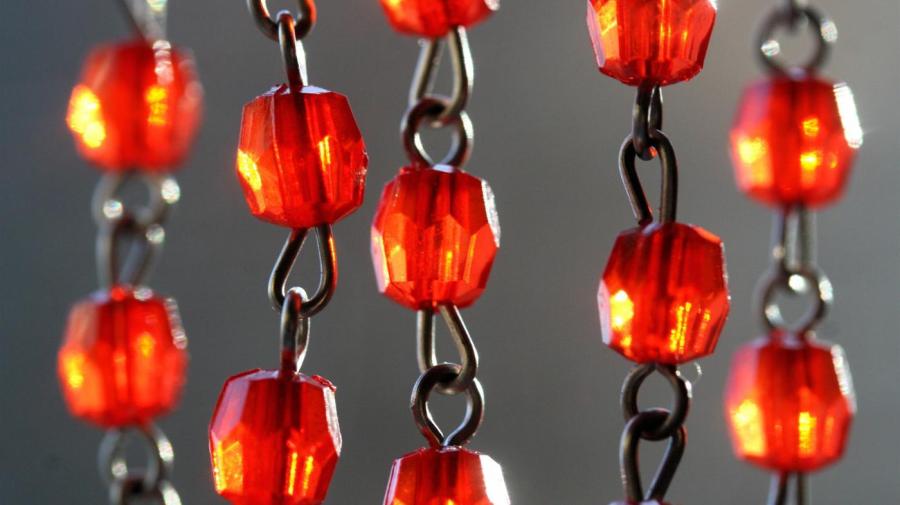What Do the Different Beads on the Rosary Represent?

Each bead on the rosary represents a prayer. Rosary beads are used as an aid to track each of the prayers repeated while meditating. Traditional rosary beads have 15 sets of ten beads, known as decades, which represent 150 psalms.
The most common prayers recited during the meditation of the rosary include the Apostle’s Creed, Hail Mary, the Lord’s Prayer (Our Father), Glory Be and Hail Holy Queen. The rosary begins with reciting the Apostle’s Creed, while focusing on the crucifix. The Lord’s Prayer is recited next, while holding the bead above the crucifix. Three Hail Mary’s are recited, for each of the next three beads for a total of nine. The next prayer and bead is Glory Be.
Once the opening prayers are completed, the meditation of each decade begins. These meditations are known as mysteries and are grouped into three categories: joyful, sorrowful and glorious. Mysteries are assigned to certain days of the week and within each of the three categories are five specific meditations to reflect on, such as the birth of Christ, the crucifixion or the resurrection. Each decade of the rosary represents one of these five subjects.
While focusing on the subject of the mystery, each decade of beads begins with one Lord’s Prayer, followed by ten Hail Mary’s and one Glory Be. Each time a prayer is recited, a new bead is held. When each decade’s prayers have been completed, the rosary is ended by reciting Hail Holy Queen.





